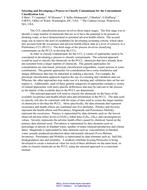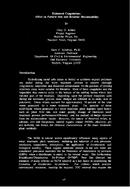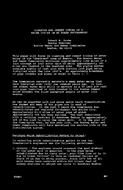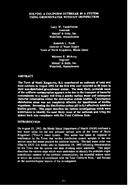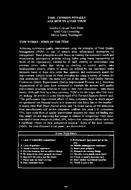Provide PDF Format
AWWA WQTC62438
- Selecting and Developing a Process to Classify Contaminant for the Contaminant Classification List
- Conference Proceeding by American Water Works Association, 11/01/2005
- Publisher: AWWA
$12.00$24.00
The Contaminant Candidate List (CCL) classification process involves three major stages. The first stage was toidentify a large number of chemicals that are in or have the potential to be present indrinking water, or have demonstrated or potential adverse health effects. The secondstage was to narrow the pool of candidates by developing screening criteria, which takesinto account both the occurrence and adverse health effects data at a level of concern, to aPreliminary CCL (PCCL). The third stage of the process involves classifyingcontaminants on the PCCL to develop the CCL.In order to classify contaminants for the CCL, a variety of approaches need to beconsidered in developing a process to classify contaminants. The selected approachwould be used to classify the chemicals on the PCCL, chemicals that have already beenpre-screened from a larger number of chemicals. The general approaches forconsideration are rule-based, prototype classification (algorithm), expert process or somecombination. The general approaches for consideration have some similarities andunique differences that may be important in making a decision. For example, theprototype classification approach requires the use of a training and validation data set.Whereas, the other approaches may make use of a training and validation data set but notrequire it. Additionally, each of these general categories of approaches includes a varietyof related approaches with more specific differences that may be relevant to the processas the details of the available data in the PCCL are determined.The selected approach will need to classify the chemicals on the basis of theavailable occurrence and health effects data and information in the PCCL. The data usedto classify will also be consistent with the types of data used to screen the larger numberof chemicals to develop the PCCL. More specifically, the data elements that representoccurrence and health effects are combined into five attributes. Potency and Severityrepresent the health effects and Prevalence, Magnitude and Persistence-Mobilityrepresent the occurrence. Potency is represented by data elements such as: the lowestobserved adverse effect levels (LOAEL), lethal dose (LD50, LDlo), and carcinogenicityvalues. Severity represents the adverse health effect caused by chemical, based on thepotency data element used. Prevalence is represented by data elements such as:percentage of detects in finished water, number of states released (production and releasedata). Magnitude is represented by data elements such as: concentration in finishedwater, pounds produced (production data) and pounds released (Toxic ReleaseInventory). Persistence and Mobility is represented by data elements such as: half-life,biodegradation rate and solubility. A method (Attribute Scoring Protocols) is beingdeveloped to create a numerical value for each of these attributes on the same basis, inorder to classify chemicals on the PCCL using the selected approach in a consistentmanner. Includes abstract only.
Related Products
AWWA ACE95247
Enhanced Coagulation: Effect on Particle Size and Residual Dewaterability..
$12.00 $24.00
AWWA ACE93172
Solving a Coliform Outbreak in a System Using Groundwater Without Disinfection..
$12.00 $24.00

